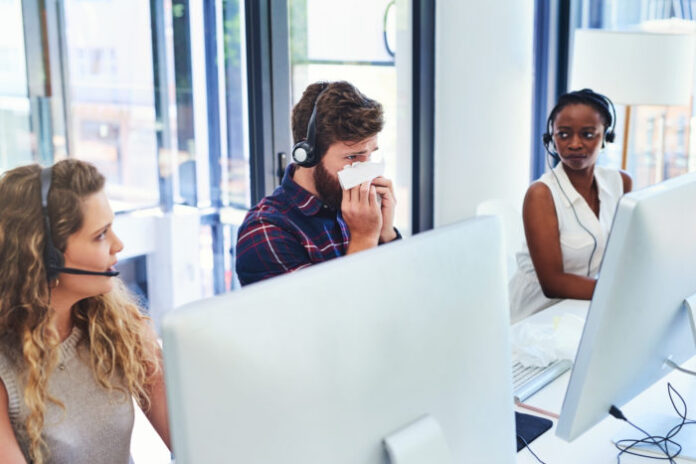The flu shot signs can be seen at all the pharmacy stores. Workers around the country are feeling the temperatures dropping. As the seasons change, and more employees feel they might be coming down with the bug, where are they going?
Well, they’re still coming into the office.
According to recent data from staffing firm Accountemps, 90% of professionals admitted they’ve at least sometimes come to the office with cold or flu symptoms. Of those respondents, 33% always go to work even when they’re under the weather.
“Whether it’s due to large workloads, pressure from the boss or because they can’t afford to take time off, it’s all too common for employees to come to the office feeling sick when they really should be resting,” says Michael Steinitz, senior executive director of Accountemps, a division of Robert Half.
Related: One-size-fits-all wellness programs don’t work
Dovetailing with Accountemps data, a recent Office Pulse study also found nearly eight out of 10 employees claim to have caught a cold at work. Further, those in larger offices were much more likely to report catching a cold at work, as more bodies mean more opportunities to set off a chain of sniffles at surrounding desks.
And it’s not just office size that can put you at risk of getting sick–where you sit also makes a difference. While the safety of four closed walls can keep out germs, those working in an open-floor plan were especially vulnerable.
According to Office Pulse, employees say they’ve caught a cold at work when working:
- In an open floor plan (84%)
- In a cubicle (78%)
- In their own office (75%)
- At a shared table (61%)
In addition to location, the study found generational differences in an employee’s approach to coming into work sick.
Related: Here’s why employees hate open-plan office spaces
While most workers of any generation said only “severe” symptoms like a fever or chills would sideline them, 7% of baby boomers would skip for “mild” symptoms like grogginess, a headache or an achy body, compared to 6% of Gen X and 5% of millennials.
In addition, workers on average use up to 2.8 sick days per year. Boomers took the fewest days off, with 2.1, while millennials and women of any generation missed the most days, with an average of three.
“Staying home when you’ve got a cold or the flu is the best way to avoid spreading germs to others and fight the illness faster,” adds Accountemps’ Steinitz.
And managers and executives can help create that culture by setting an example from the top.
“Bosses should set an example by taking time off when they’re under the weather, encouraging employees to do the same and offering those with minor ailments the ability to work from home,” he said. “Bringing in temporary professionals can keep assignments on track during staff absences.”



